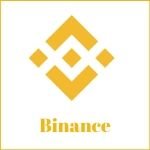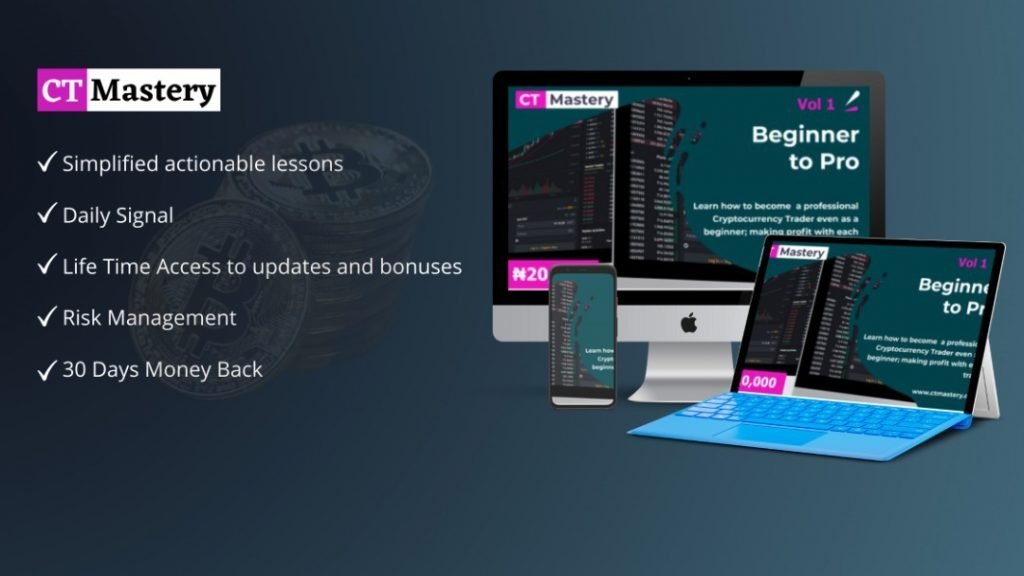If you have been in the crypto space for a while now, then there is no way you would not have noticed the SOL coin.
It is the native currency of the blockchain network named after the San Diego beach, Solana.
SOL is crushing it!
Its value has increased exponentially from about $1.8 to $208 (Jan. 1st – Oct. 26th, 2021), making it the 6th most valued cryptocurrency.
But, given how well this coin has fared, you might ask if it is too late to dabble in it. That is what I intend to address in this review.
Let’s get started.
Post Summary
This is what I will cover:
- Solana Blockchain Explained!
- Understanding Solana’s PoH And Tower BFT
- What Makes The Solana Blockchain Unique?
- A Deep Dive Into The SOL Coin
- Exchanges To Buy SOL Coin
- Best Wallets To Store SOL
- Should I Buy Solana?
- Solana Vs Ethereum Vs Polkadot
- Conclusion
You can use the jump links to navigate to the section that catches your fancy
1. Solana Blockchain Explained

Solana is a blockchain network developed by Solana Labs, a San Francisco-based firm.
The company’s founder, Anatoly Yakovenko, is a software developer with 13 years of experience at Qualcomm, one of the largest telecom companies.
He is also the brain behind “Proof of History” for the blockchain network, which is one of the core features of the Solana network (more about this later).
The Solana project began with a whitepaper published in 2017.
However, its mainnet beta was released in March 2020.
Similar to Ethereum, Solana allows anyone to create and host DApps and smart contracts.
However, it focuses on providing a highly scalable platform for its coin, SOL, and all the DApps built on its network.
Solana aims to solve the blockchain trilemma issue.
It believes its network to be decentralized, safe, and scalable all at the same time.
But is this true, and how does it intend to achieve it? We will find out in the section below.
2. Understanding Solana’s PoH And PBFT
Solana has 8 Core features.
However, in this post, we will just discuss the two most important ones.
a. Solana’s PoH
PoH stands for “Proof of History” and it is not a Consensus Mechanism.
As I mentioned earlier, this idea was conceived by Anatoly Yakovenko.
Proof of History is a cryptographic clock that timestamps each transaction on the network.
It does this to enable validators to determine the exact time that a transaction was submitted to the network.
Furthermore, the cryptographic clock meant here is the SHA-256 (if you can recall, this is a bitcoin mining algorithm).
But Anatoly Yakovenko dubs it VDF (verifiable delay function).
Now, if I am to explain this idea better:
In a standard blockchain, like Bitcoin, transactions are delayed because they require at least 6 confirmations to be added to the blockchain.
Additionally, each block must be added after each block in a sequential arrangement.
However, this does not apply to PoH, instead, validators on the network compute the state of the network from the blockchain itself.
In Proof of History, each node or validator constantly runs its clock and ships the proofs across the network.
With this, anyone can verify the transaction by referencing the time.
Moreso, this enables the Solana network to tackle the blockchain trilemma issue.
And impressively, the network has a block time of 400 milliseconds.
b. Solana’s Tower BFT
Tower BFT is the consensus mechanism on the Solana network.
It is a PBFT-like consensus algorithm.
PBFT (Practical Byzantine Fault Tolerance) is a consensus mechanism that improves upon the BFT ( Byzantine Fault Tolerance).
However, the difference between PBFT and Solana’s consensus mechanism is that it leverages the PoH to achieve consensus on network transactions.
PoH is often mistaken to be Solana’s consensus mechanism but it is not.
Now that we’ve cleared the air, let’s look at some of the characteristics that make the Solana network unique.
3. What Makes The Solana Blockchain Unique?
I will give 4 reasons I think the Solana blockchain is unique.
- Scalability
Solana is one of the fastest blockchain networks that outperforms VISA.
It is designed to process up to 710,000 tps with a block time of 100 milliseconds.
However, as of October 2021, it has been able to achieve a throughput of 65,000 and a block time of 400 milliseconds.
- DApps
DApps and smart contracts that are created on Solana are written in the programming language “Rust”.
Rust is one of the best programming languages but it is difficult to learn and takes considerable experience.
It does, however, provide the network’s DApps with an advantage in that they are more original than copy-and-paste codes.
Another thing is that DApps on the Solana network are not EVM compatible.
It simply means that Ethereum-based DApps cannot be ported to the Solana network.
However, Solana has created Wormhole, a cross-chain bridge that allows Ethereum-based Dapps to be integrated into the Solana network.
- Validators
There are up to 1,122 validators on the Solana network as of October 28, 2021.
Anyone can run a validator node on the Solana network.
Moreso, there is nothing like a minimum staking amount required to qualify.
This means that the network has an open room for decentralization.
However, some critics have argued that the network is yet centralized.
The reason for this is that, in comparison to other blockchains, the validator’s hardware node on the network is extremely expensive and not everyone will be able to afford it.
- Blockchain Trilemma
Solana seeks to address the blockchain trilemma, which is one of the most intriguing aspects of the network.
Blockchain trilemma sets a standard for what a true blockchain should be.
This is impressive! But sadly, the Solana network experienced an outage for 12 hours when attempting to achieve a throughput of 400,000tps.
This goes to say that the blockchain trilemma theory still holds true.
- Transaction Fee
The network has one of the lowest transaction fees.
Each transaction on the network costs $0.00025 which is nothing when compared to similar blockchain networks like Polkadot, Ethereum, and Cardano.
The SOL coin is another aspect of this blockchain that makes it so unique.
I will cover it in-depth in the next section.
4. A Deep Dive Into The SOL Coin
SOL is the native cryptocurrency of the Solana network.
As of October 28th, 2021, SOL is worth $200, with a market capitalization of $58,970,441,399.
It is also the 6th most-ranked cryptocurrency on Coinmarketcap.
SOL has two primary use cases:
- Staking: Participants of the network stake SOL to secure the network and when they do so, they earn SOL coin
- Transaction Fees: All transaction fees on the Solana network are paid for with SOL coins. All SOLs sent as transaction fees undergo coin burn.
SOL’s ICO raised a total of $25 million and was held 5 times.
- Seed Sale (March 2018): A private token sale that generated $3.17 million after selling 80 million SOLS at $0.040 per SOL.
- Founding Sale (June 2018): More than 63 million SOLs were sold for $12.63 million at $0.20 per SOL.
- Validator Sale (July 2019): 25 million SOLs were sold for $2.13 million $0.22 per SOL in a Private sale.
- Strategic Sale (Feb. 2020): More than 9 million SOLs were sold for $2.29 million $0.25 per SOL in a private sale.
- Public ICO on Coinlist (March 2020): 8 million SOLs were sold for $1.76 million $0.22 per SOL.
Additionally, SOL had a total supply of 500 million coins.
However, the community learned that a wallet held more than 13 million SOLS, and 11,365,067 million SOLS were burned as a result.
This reduced the total supply to 488,634,933 SOLs.
SOL Coin Distribution

301,094,490.97 SOLs are currently in circulation as of Oct. 28th, 2021.
SOL is integrated into 3 blockchains:
- Solana blockchain – As an SPL coin
- Ethereum blockchain – As an ERC-20 token
- Binance smart chain – BEP-20 token
Looking for where to buy SOL, let’s find out below.
5. Exchanges To Buy SOL Coin
These are the top 4 exchanges to buy/sell SOL.
- Binance

Binance is the biggest exchange in the world with over 13 million users.
The exchange has good liquidity and volume for all supported SOL trading pairs.
You can trade SOL against the following currencies:
- USDT, BUSD, BTC, TRY, BNB, BRL, USDC, AUD, GBP, BIDR
2. Kucoin

Kucoin is a Seychelles-based crypto exchange founded in 2017.
Coinmarketcap puts it third among the “Top 100 Crypto Exchanges”.
Every day, up to $7,420,000,765.57 in volume is traded on Kucoin.
SOL is traded against USDT on Kucoin.
3. Coinbase

Coinbase comes second place in Coinmarketcap’s top 100 crypto exchanges, right after Binance.
The exchange is available in over 100 countries.
The USDT, USD, EUR, BTC, and GBP are the currencies supported for the buy/sell of SOL on Coinbase.
4. Huobi

Huobi is one of the oldest crypto exchanges founded by Leon in 2013.
It is a reputable exchange and supports a plethora of cryptocurrencies.
One of the things that makes Huobi remarkable is that it has never been hacked since its inception.
SOL is traded against USDT, BTC, and ETH on Huobi.
SOL has been listed on a good number of exchanges. I only listed those with the best liquidity, others can be found here.
I have listed the best wallets to store SOL coins below. Keep reading!
6. Best Wallets To Store SOL
These are the top 5 wallets I would recommend.
1. Solfare

Solfare is a non-custodial wallet designed for the Solana network.
It is available on desktop, mobile, and as a browser extension.
The wallet features staking, swap, and the NFT marketplace.
2. Ledger

Ledger was founded in 2014 by a French company, but it has become more popular than its antecedents.
It’s one of the best hardware wallets on the market, and it will cost you around $59.
Ledger has two wallets – Ledger Nano S and Ledger Nano X.
2. Trust Wallet

Trust wallet is a non-custodial hot wallet that is available for download in Google Play and Appstore.
It is a multi-crypto wallet with an in-built DEX, a staking feature, and a Web 3 browser that allows users to interact with Dapps on the Ethereum blockchain.
4. Phantom Wallet

Phantom is a Solana-based wallet; it supports all Solana-based cryptos.
It is a non-custodial wallet and it is only available as a browser extension for Chrome.
You can use Phantom to stake, swap, buy/sell NFT, and access Solana-based Dapps.
5. Exodus

Exodus is a non-custodial multi-crypto wallet with unique features.
It has the most intuitive and friendly UI when compared to other crypto wallets.
Exodus has an in-built exchange, that keeps track of all your crypto assets, but most wonderfully, it allows users to earn rewards for storing their crypto.
You can also store SOL on Exchange wallets.
Exchange wallets are custodial wallets offered by a cryptocurrency exchange. However, they are the least secure storage option.
As mentioned earlier, SOL has performed exceptionally well in the crypto market.
Given this, some are wondering whether it is now too late to invest in the coin.
I will air my opinion on this in the next section
7. Should I Buy Solana?
SOL is rocketing to the moon.
While other coins lost over 20% of their value during the May 2021 market crash, SOL investors received a windfall profit of 50%.
Gladly, SOL’s price has continued to soar exponentially since then.
The reason the SOL coin has continued to soar could be a result of the following:
- A highly scalable blockchain:
Solana’s transaction throughput outperforms VISA.
This is particularly fascinating considering that a scalable network like Solana is needed for cryptocurrencies to achieve mainstream adoption.
- Solana Ecosystem
The Solana ecosystem already includes over 400 projects, including DeFi, DApps, NFT, DEx, AMM, and many more.
And, come to think of it, the Solana scalable network has attracted a significant number of Ethereum-based Dapps.
Ethereum-based projects like Auduis and Circle have been ported to the Solana network.
- Big Time Investors
Solana is backed by big crypto industries like OKEx, MXC, NGC Capital, Blocktower Capital ETC.
However, the major investors behind the project are FTX and Alameda research.
The two companies are some of the big players in the crypto niche and were founded by Sam Bankman Fried.
Currently, all DApps built by FTX and Alameda research are hosted on the Solana network and the most popular is the Serum Dex.
Now, as you can see, it is obvious that the number of projects built on the Solana network will continue to thrive.
And, because SOL is used as a transaction fee, they will contribute to a significant increase in the coin’s price.
The good thing also is that it is a deflationary coin when fees are paid some of them are burned. This helps to keep the coin’s value stable.
Furthermore, Solana is funded by two large crypto firms, that will almost certainly do everything in their power to ensure the project’s long-term success.
Nevertheless, there is something about the supply of the SOL coin that is worth mentioning.
SOL has conflicting token distribution information; what we have on the Messari publication differs from the one on Binance Research.
But I found that the founder released a statement apologizing and clarifying their community on what happened.
Personally, I see the Solana coin as a good investment that is still worth investing in.
But note that this is not financial advice; make sure you carry out your research before investing.
Continue to the next section to see how Solana fared over like blockchains!
8. Solana Vs Ethereum Vs Polkadot
These three blockchain networks were specifically designed for the creation and hosting of smart contracts.
However, each blockchain is built with its own set of features and architecture.
Take a look at the table below to see how the three blockchains compare.
| Parameter | Solana | Ethereum | Polkadot |
| Coin | SOL | ETH | DOT |
| Launch year | 2020 | 2015 | 2020 |
| Founder | Anatoly Yakovenko | Vitalik Buterin | Gavin Wood |
| Rank on CMC (Nov 2021) | #6 | #2 | #8 |
| Price (Nov 2021) | $208 | $4,496.96 | $51.73 |
| Market Cap (Nov 2021) | $71,841,837,942 | $531,615,050,197 | $51,132,186,044 |
| Consensus Mechanism | Tower BFT | Proof of Work | Proof of Stake (GRANDPA and BABE) |
| TPS | 65,000 | 15 | >160,000 tps |
| Block Time | 400 milliseconds | 15 seconds | 6 seconds |
| Fees | Low | High | Low |
| Interoperability | Yes | No | Yes |
| Programming Language | Rust | Solidity | Rust C++ Etc. |
| Parachain | No | Not yet | Yes |
| TVL (Defi LIama Nov 2021) | $172.29b | $14.73b | – |
But which is the best of the three?
The truth is, the features you seek in a blockchain determine which one is the best for you.
Solana could be the best blockchain for you if you want to create or use scalable DApps or coins.
On the other hand, Ethereum will be the best if you want the following:
- A highly secure blockchain network that has stood the test of time
- Dapps that operate in silos
However, Polkadot is the trailblazer if you want:
- Blockchain interoperability
- High transaction throughput
Don’t leave yet! You need to see my conclusion.
Heads Up!!!

We developed a perfect course to help you master Cryptocurrency Trading.
Go to www.ctmastery.com to enrol.
You can also join our Telegram community at https://t.me/ctmastery for more information.
8. Conclusion
This section concludes my Solana review.
In my opinion, is a promising crypto project backed by an expert founder, efficient decentralized blockchain, and major crypto investors.
And with this, I see the SOL coin thriving even better in the crypto market.
Now, it is time I got your opinion.
What do you think about the Solana network?
Do you think the SOL coin will continue to “moon”?
Put your thought in the comment section and I will respond.
If you enjoyed this post, share it with your friends by clicking the social media icons below.
Also Read:



0 Comments